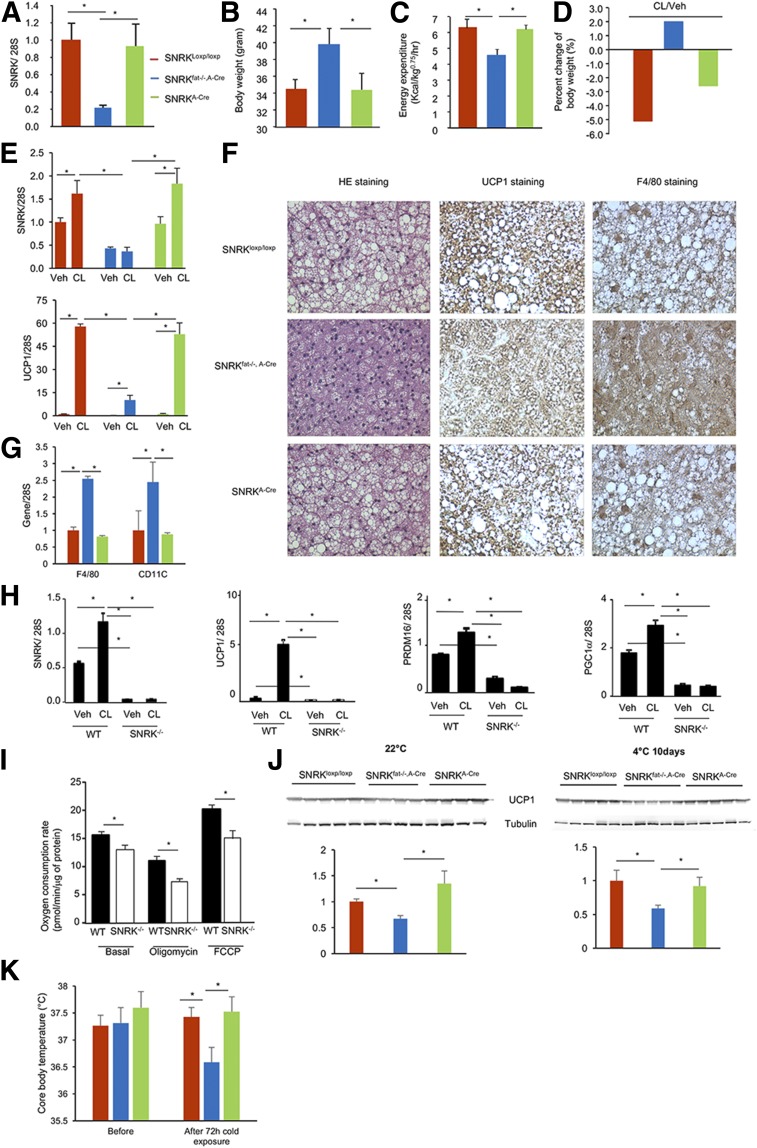Figure 5.
Effect of adipose SNRK deficiency on body weight and energy expenditure. A: SNRK gene expression in BAT of SNRKloxp/loxp, SNRKfat−/−, A-Cre, and SNRKA-Cre mice (n = 3 or 4 mice/group). B and C: Body weight (n = 6–12 mice/group) (B) and energy expenditure (n = 4 mice/group) (C) of SNRKfat−/−, A-cre and littermate control mice. D: Percentage change in body weight of SNRKfat−/−, A-cre and littermate control mice treated with CL316,243 (CL) or vehicle (Veh) (n = 3 or 4 mice/group). E: SNRK and UCP1 gene expression in subcutaneous adipose tissue of SNRKfat−/−, A-cre and littermate control mice treated with Veh or CL (n = 3 or 4 mice/group). F: Hematoxylin-eosin (HE), UCP1, and F4/80 staining of BAT from SNRKfat−/−, A-cre and littermate control mice. G: Expression of F4/80 and CD11c genes in BAT from SNRKfat−/−, A-Cre and littermate control mice (n = 4 mice/group). H: Expression of SNRK and thermogenic genes in primary brown adipocytes differentiated from brown preadipocytes isolated from Veh- or CL-treated SNRK−/− and littermate WT newborn pups. I: Oxygen consumption by primary brown adipocytes as described in H under basal or treated conditions. J: UCP1 protein levels in BAT from SNRKfat−/−, A-Cre and littermate control mice (n = 4 or 5 mice/group) at 4°C and 22°C. K: Change in core body temperature of SNRKfat−/−, A-Cre and littermate control mice (n = 4–8 mice/group) upon exposure to cold for 72 h. *P < 0.05.

